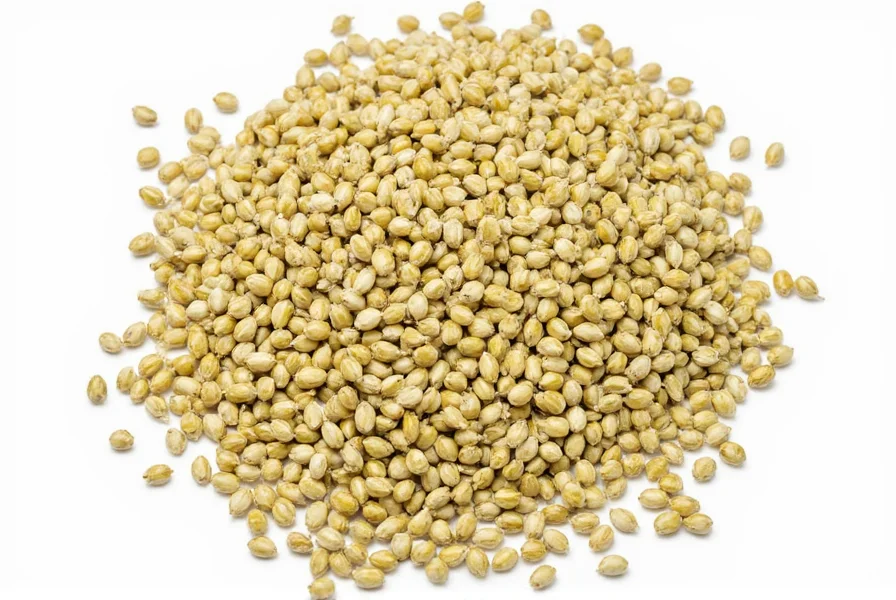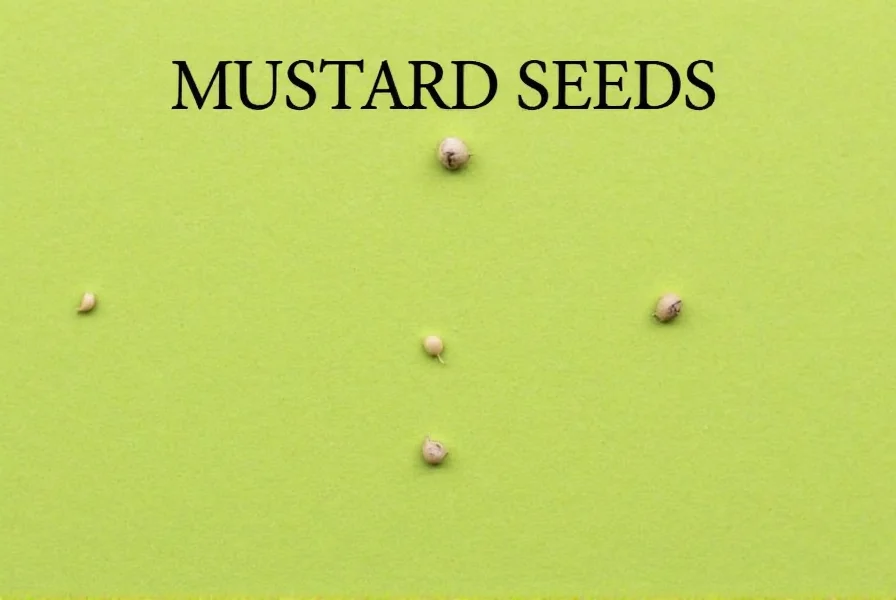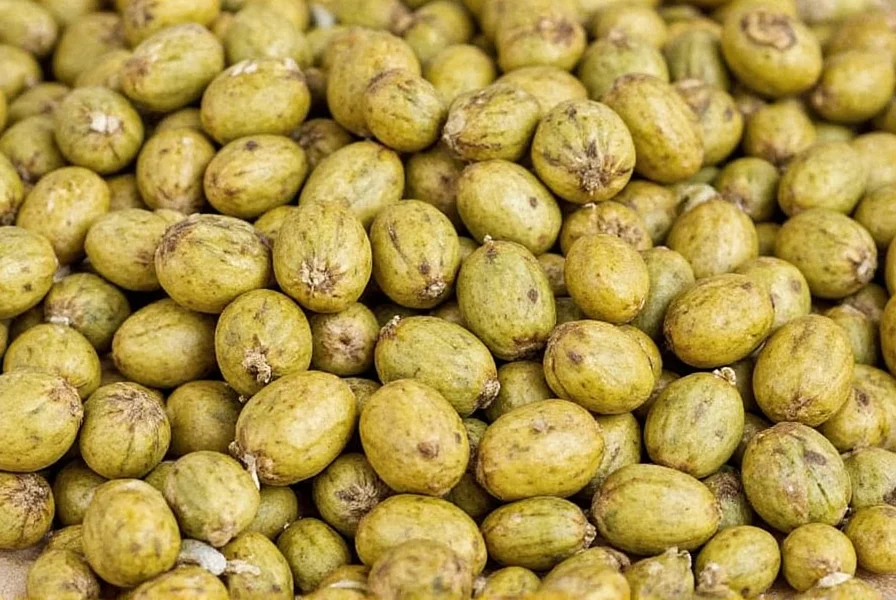When searching for a picture of a mustard seed, you'll notice these remarkable botanical specimens are nearly spherical and incredibly small—about the size of a pinhead. Understanding what a real mustard seed looks like requires examining both macro photography and contextual size comparisons.
Botanical Characteristics of Mustard Seeds
Mustard seeds come from plants in the Brassica and Sinapis genera. Three primary varieties exist, each producing distinctly colored seeds:
| Mustard Variety | Seed Color | Average Size | Flavor Profile |
|---|---|---|---|
| White/Yellow Mustard | Pale yellow to light brown | 1.0-1.5 mm | Mild, slightly tangy |
| Brown Mustard | Brown | 1.0-2.0 mm | Hotter, more pungent |
| Black Mustard | Dark brown to black | 1.5-2.0 mm | Strongest, most intense |
Visual Identification Guide
To properly identify a mustard seed in a picture, look for these key characteristics:
- Spherical or slightly oval shape with a smooth surface
- Size comparable to a grain of sand or small pinhead
- Distinct color depending on variety (yellow, brown, or black)
- When whole, they appear hard and intact; when crushed, they release pungent oils

Size Comparison for Context
Understanding the actual size of a mustard seed requires visual context. When examining a picture of a mustard seed:
- They're approximately 1/16th of an inch in diameter
- It takes about 10-15 mustard seeds lined up to equal one centimeter
- They're significantly smaller than sesame seeds but larger than poppy seeds
- A single teaspoon can hold roughly 1,000-1,500 mustard seeds
Historical and Cultural Significance
The mustard seed's tiny size has made it a powerful symbol across cultures. In religious texts, it's frequently used as a metaphor for something small that grows into something significant. Ancient civilizations valued mustard seeds for both culinary and medicinal purposes—Egyptians used them in cooking as early as 2000 BCE, while Romans created the first recorded mustard condiment by mixing crushed seeds with grape juice.

Practical Applications Today
Modern applications of mustard seeds extend far beyond the condiment we commonly associate with them. Culinary professionals distinguish between mustard seed varieties for specific applications:
- Yellow seeds dominate American-style ballpark mustard
- Brown seeds create the heat in Dijon and spicy brown mustards
- Black seeds feature prominently in Indian and Ethiopian cuisines
- All varieties contain glucosinolates that create that distinctive pungent flavor when mixed with liquid
Scientific Interest in Mustard Seeds
Botanists continue to study mustard seeds for their remarkable growth potential. Despite their microscopic size, these seeds contain all genetic information needed to produce a plant reaching 3-6 feet in height. The Brassica juncea plant (brown mustard) can complete its life cycle from seed to mature plant in just 6-8 weeks under optimal conditions—a remarkable feat for something starting at less than 2mm in size.
Frequently Asked Questions
What does a real mustard seed look like up close?
Under magnification, a real mustard seed appears as a nearly perfect sphere with a smooth, hard shell. Yellow varieties have a pale golden color with possible slight mottling, while brown and black varieties show deeper, more uniform coloring. The seed coat is thin but durable, protecting the embryo inside. When viewed under high magnification, you can see a small hilum (scar) where the seed was attached to the plant.
How can I tell the difference between mustard seeds and similar-looking seeds?
Mustard seeds can be distinguished from similar small seeds by several characteristics. Compared to poppy seeds (which are similarly sized), mustard seeds are more perfectly spherical and have a more uniform color. Unlike sesame seeds, which are elongated and flattened, mustard seeds maintain a consistent round shape. When placed side by side, mustard seeds also have a distinctive pungent aroma when crushed, unlike the more neutral scent of other small seeds.
Are there any safety concerns when handling mustard seeds?
Mustard seeds are generally safe to handle, but certain precautions should be taken. The seeds contain compounds that can cause skin irritation in sensitive individuals, especially when crushed. People with mustard allergies should avoid direct contact. When grinding mustard seeds, wearing a mask is recommended as the fine particles can irritate nasal passages and eyes. Properly stored in a cool, dry place, mustard seeds remain viable for planting for 4-5 years.
What's the difference between yellow, brown, and black mustard seeds?
The primary differences between yellow, brown, and black mustard seeds relate to their plant source, size, and chemical composition. Yellow mustard seeds (Brassica hirta) are the mildest, measuring 1-1.5mm. Brown mustard seeds (Brassica juncea) are slightly larger (1-2mm) and contain more pungent compounds. Black mustard seeds (Brassica nigra) are the largest (1.5-2mm) and most pungent, with the highest concentration of sinigrin, the compound responsible for mustard's characteristic heat. Each variety serves different culinary purposes based on these properties.
How long do mustard seeds remain viable for planting?
When properly stored in cool, dry conditions away from light, mustard seeds maintain good germination rates for 4-5 years. After this period, viability gradually decreases but some seeds may still sprout up to 8 years later under optimal storage conditions. For best results, plant mustard seeds within 2-3 years of harvest. The seeds' small size and hard seed coat contribute to their relatively long viability compared to many other garden seeds.











 浙公网安备
33010002000092号
浙公网安备
33010002000092号 浙B2-20120091-4
浙B2-20120091-4